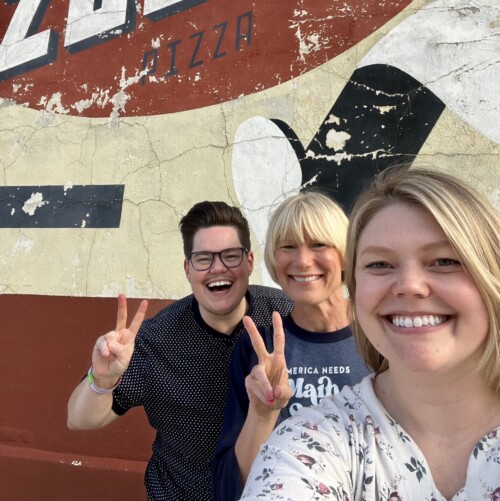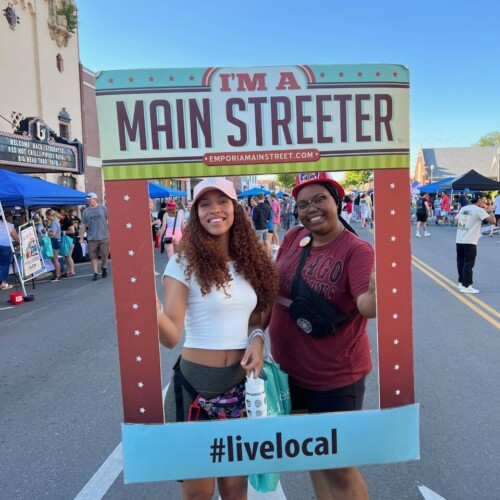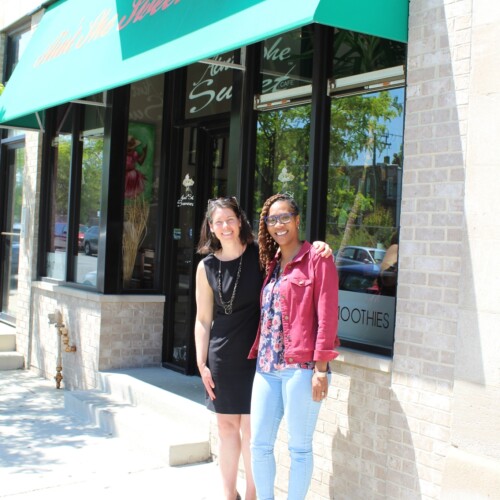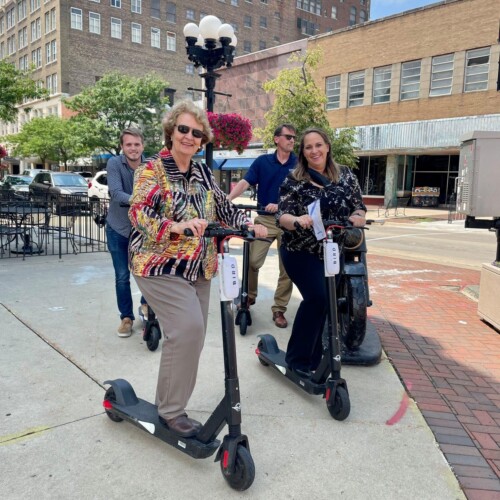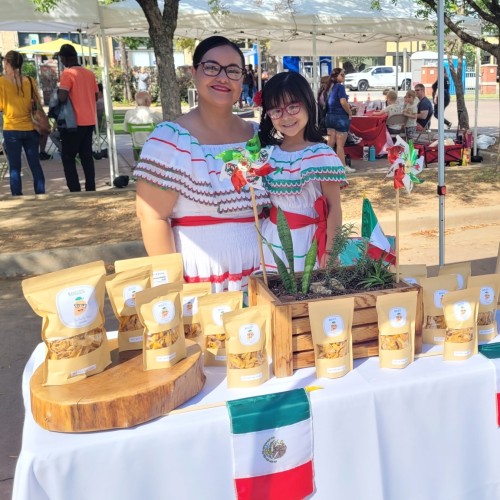August 26, 2020 | Holiday Shopping During COVID: What Should Main Streets Expect? | By: Matthew Wagner, Ph.D., Vice President of Revitalization Programs, NMSC |
While August may seem a little early for most to think about the holiday shopping season, this time represents a critical period for retailers as inventory orders typically need to be placed by now, and strategic thinking completed as to what consumers will be looking for in 2020. But this year obviously presents a much more unique challenge given the persistent influence of COVID-19 on consumer spending and shopping habits, as well as the incredible importance of trying to recoup lost sales from the stop, go, stop roller coaster of government shutdown and reopening guidelines.
Even without COVID, it’s hard to understate the importance of holiday shopping for mom and pop retail. According to the National Retail Federation, holiday sales represent about 20 percent of annual retail sales each year, with some retailers like hobby, toy, and games stores totaling 30 percent of sales. Of those sales, online represented nearly 15 percent in 2019.
While none of us has a crystal ball to see into the future, it is most likely that what we are observing today will be the conditions prevalent as the holiday season gets into full swing. As such, there are some competing drivers surrounding holiday shopping on our Main Streets. On one hand, there is a desire to have a traditional holiday shopping experience. On the other hand, there is continued fear around the virus, and consumers have gotten used to—and show an increased preference for—convenient delivery and pick-up options.
While it’s likely there is no clear “winner” between those competing interests, two recent holiday shopping surveys by Google and Radial shed some light as to the consumer psyche going into the holiday shopping season. Both suggest what we’ll likely see is a blend between those two, with holiday shopping remaining strong despite the economy, primarily due to savings from scaled-back summer vacation spending.
Google Findings
A Google survey found more than a third of U.S. shoppers who normally shop in store for Black Friday say they won’t this year. And half of U.S. shoppers say the pandemic will affect how they’ll shop for the holidays this year. This reaffirms the need for Main Street retailers to remain nimble and agile in order to respond quickly as we gain more clarity around the response of shoppers during the holidays.
Additional survey highlights:
- Nearly 75% of shoppers who plan to shop this season said they will shop online more for the holidays than they did in previous seasons, and a similar number said they would first browse for gift ideas online and not in-store.
- Local is important!! 66% of shoppers said they plan to shop more at local small businesses.
- 47% of planned shoppers said they’ll use options to buy online, pickup in store/curbside pickup.
- And regarding shopping timing: 70% of shoppers said they intend to plan their shopping earlier to avoid crowds, and 80% of planned shoppers will consolidate their shopping to make fewer trips than they did in previous years.
Radial, a leading omnichannel commerce company, surveyed 1,000+ consumers across the United States to determine their holiday shopping plans. Highlights of their survey results include:
- 60% of consumers, while having a desire for in-store shopping, suggest they will use e-commerce to a much greater degree than in previous years because of safety concerns and increased familiarity with online ordering.
- 39% of shoppers plan to start shopping for the holidays in October into early November.
- The majority of consumers surveyed plan to spend the same as last year on holiday gifts, meaning retailers should expect similar or higher order volumes as previous years.
- 63% of shoppers say they are slightly or very much more likely to purchase from a retailer they know was following COVID-19 safety precautions in-store.
What We Suggest
Given the data and our previous look at COVID impacts on consumer and economic trends (see past trends blog), the 2020 holiday shopping season will look nothing like the traditional experience-driven seasons of the past. As such, retailers AND place managers will need to be even more creative as they seek to attract shoppers back.
Retailers
Manage Inventory Closely: Be even more judicious with your holiday inventory purchases. Given the unknowns around COVID spikes and perhaps reclosure orders, being saddled with a ton of inventory is not a situation most small businesses can afford. In addition, with limited cash on hand, taking on debt for inventory may be a challenge and not an exciting proposition for most small businesses. Seek out vendors that are positioned with small lead times to ensure quick turnaround as you spot fast moving inventory.
Ensure Promptness on Delivery: With issues surrounding the U.S. Postal Service, be transparent in your delivery policy, as well as continuing to offer buy online, pick up at the store and/or curbside options.
Promote Clean and Safe: As part of your holiday marketing, rather than being completely product and sales driven, capture the work you’ve done to create a safe shopping experience for those heavily concerned with COVID. As consumers have been to more businesses throughout the past couple of months, they will be keenly aware and will have created a defined mindset as to what is safe and not safe for them. As such, be diligent and very visual with how clean your store is as well as visual cleaning and safety protocols you have in place for customers and employees.
Appeal to Local: Consumer research is revealing the importance of supporting local businesses as part of shopping decisions. Tell your story of connection to and support for the local community as a value-add component to shopping during the holiday. Consumers will want to talk to family and friends about supporting local, further giving your business a boost on social media channels.
Bring Exclusivity to the Holidays: Offer private holiday shopping events or by appointment only during normally closed hours – make this available exclusively to your most engaged customers, or those that sign up, etc. (Example –
Gibson’s Bookstore in Concord, NH )
Generate Excitement and Surprise with In-Store Pop Ups: Consider hosting an in-store pop-up to generate additional excitement with unique product offerings, without the added cost of new inventory.
Partition Your Store Hours: While most retailers during the holiday shopping season may lengthen their store hours, we would advise taking this a step farther by offering special shopping hours for specific customer groups. Not only does lengthening your store hours allow for greater dispersion of consumers to avoid crowding and having to turn away customers due to your local/state occupancy guidelines, it also provides an opportunity to carve out special hours for those most vulnerable and concerned about COVID, such as senior citizens and/or those with pre-existing medical conditions.
Segment Sales/Specials: Given that research suggests shoppers will spread out their shopping over a period of time resulting in a likely elongated 2020 holiday shopping season, consider presenting a new featured, limited item/product each week rather than agglomerating items for one big sale. It’s all about building a sense of exclusivity and keeping them coming back, rather than a one-shot approach.
Place Managers
Market Holiday Experience Built on Clean and Safe: Research data consistently shows that many consumers will remain reluctant to shop during the holidays if they do not feel safe. Rather than build a marketing campaign from the perspective of sales, lead with one that highlights a clean and safe shopping experience
Provide for Outdoor Holiday Shopping Experiences: Retailers have made great efforts over the past few months in upgrading their websites with some even offering virtual capabilities. However, given the experiential memories that go with holiday shopping, there will likely be a yearning for replicating seasons of past, but safely. One promotional strategy to consider is creating more outdoor shopping opportunities with retail parklets, sidewalk stalls in front of stores, or even the conversion of alleyways into outdoor shopping zones for merchants to use for holiday items. (And yes, I can hear all the public works officials screaming about snow removal 😉)
Conduct a Small Business Holiday Preparedness Audit: Meet early on with all your retailers to learn more about how they are approaching the holidays and any needs they may have relative to holiday preparedness. Use this opportunity to:
Share consumer data on holiday shopping (from above)
Assess their plans
Understand their e-commerce capabilities and recommendations how to upgrade if needed
Communicate downtown/district promotion strategies and how to engage
Make connections resources as needs are identified.
Tip: This year will require a more high-touch approach from place managers and integration with counseling from Small Business Development Centers.
Think Niches: Given the need to control for high volume traffic as well as be highly strategic with limited marketing and promotion resources, consider hosting more niche-oriented activities that target your most frequent and dedicated shoppers, and/or that target specific business mix niches that will appeal to consumer segments interested in variety and selection within that product niche.
Organize Co-op Delivery and Pick-Up: In the initial phases of COVID, there was less demand for parking and thus many stores were able to use for quick pick-up services. There may be more premium placed on those spots during the holidays making this service more difficult. Further, research data is showing more consumers will be seeking delivery during holiday shopping season. With anticipated rise in delivery requests, coupled with greater demands on downtown/district parking, consider the following cooperative opportunities as a value-added service to your retailers:
Offer a Co-op Delivery Service: Contract with a service or organize volunteers to make deliveries for participating retailers. Note it may be difficult to include restaurants given the extreme volume, so evaluate based on your circumstances.
Provide a Convenient One-Stop Location for Downtown/District Pick-up. Ask volunteers to help with pick-up services during specific hours each day in a designated area. For example, a parking lot staged in a way that creates a drive-thru effect. If not feasible, work with your municipal government to designate a special pick-up spot(s) within current street parking areas to allow for pick-up.
Tip: Blending the cost and service throughout the downtown/district amongst many retailers can greatly reduce the expense and provide a social venture and value-added service opportunity for your organization.
Create an Outdoor Dining/Café Ambiance (even in the cold): With travel dramatically curtailed and more people having to limit their vacations, perhaps bring a little European and eclectic flavor to your downtown/district. With the fall bringing colder weather (especially for those of us in the north), add outdoor heater lamps to provide a comfortable outdoor dining and café experience for shoppers. This also creates more space for socially-distanced dining and provides those who have safety concerns with indoor dining another option.
Pivoting Grant Funds: Many downtown and district management organizations developed COVID relief funds over the spring and summer to assist in the recovery. Many were simply designed to keep the doors open and to help merchants with clean and safety protocols. If there are opportunities for additional funds and/or pivoting of any remaining funds, consider giving flexibility to items like inventory purchases, holiday marketing expenses, and e-commerce strategy implementation.
While the holidays may seem like a distant future, the clock has already started for planning and thinking strategically with how Main Street retailers and our downtowns/districts need to approach a holiday shopping season like none before. A recent announcement by Target that they will start holiday sales in October, coupled with Amazon indicating recently on CNBC they will likely do the same, suggest Main Street retailers will need to quickly pivot summer and fall inventories to gear up for the holidays, as well as have their sales promotion strategy in place. At the same time, they will need to balance the need for foot traffic with COVID-induced consumer demands for e-commerce, delivery, and pick-up options. Fortunately, hidden within all the COVID chaos and uncertainty, is the silver lining that the true holiday shopping experience sought by millions of consumers cannot be found solely online or in a big warehouse, but along the Main Streets throughout the U.S.
Disclaimer: This material has been prepared for informational purposes only and is not intended to provide, and should not be relied on for legal, insurance, liability, tax, or accounting advice. You should consult your own legal, insurance, tax, and accounting advisors for guidance on these matters.
Meet the Author
 Matthew Wagner, Ph.D., Vice President of Revitalization Programs: Matthew Wagner, Ph.D. serves as Vice President of Revitalization Programs at the National Main Street Center, Inc. In this role, he is responsible for driving the Center’s field service initiatives including the development and delivery of technical services for Main Street America and Urban Main programs, directing the Center’s new research agenda, as well as professional development programming through the Main Street America Institute.
Matthew Wagner, Ph.D., Vice President of Revitalization Programs: Matthew Wagner, Ph.D. serves as Vice President of Revitalization Programs at the National Main Street Center, Inc. In this role, he is responsible for driving the Center’s field service initiatives including the development and delivery of technical services for Main Street America and Urban Main programs, directing the Center’s new research agenda, as well as professional development programming through the Main Street America Institute.
Read Matthew's bio.
 Matthew Wagner, Ph.D., Vice President of Revitalization Programs: Matthew Wagner, Ph.D. serves as Vice President of Revitalization Programs at the National Main Street Center, Inc. In this role, he is responsible for driving the Center’s field service initiatives including the development and delivery of technical services for Main Street America and Urban Main programs, directing the Center’s new research agenda, as well as professional development programming through the Main Street America Institute.
Matthew Wagner, Ph.D., Vice President of Revitalization Programs: Matthew Wagner, Ph.D. serves as Vice President of Revitalization Programs at the National Main Street Center, Inc. In this role, he is responsible for driving the Center’s field service initiatives including the development and delivery of technical services for Main Street America and Urban Main programs, directing the Center’s new research agenda, as well as professional development programming through the Main Street America Institute.